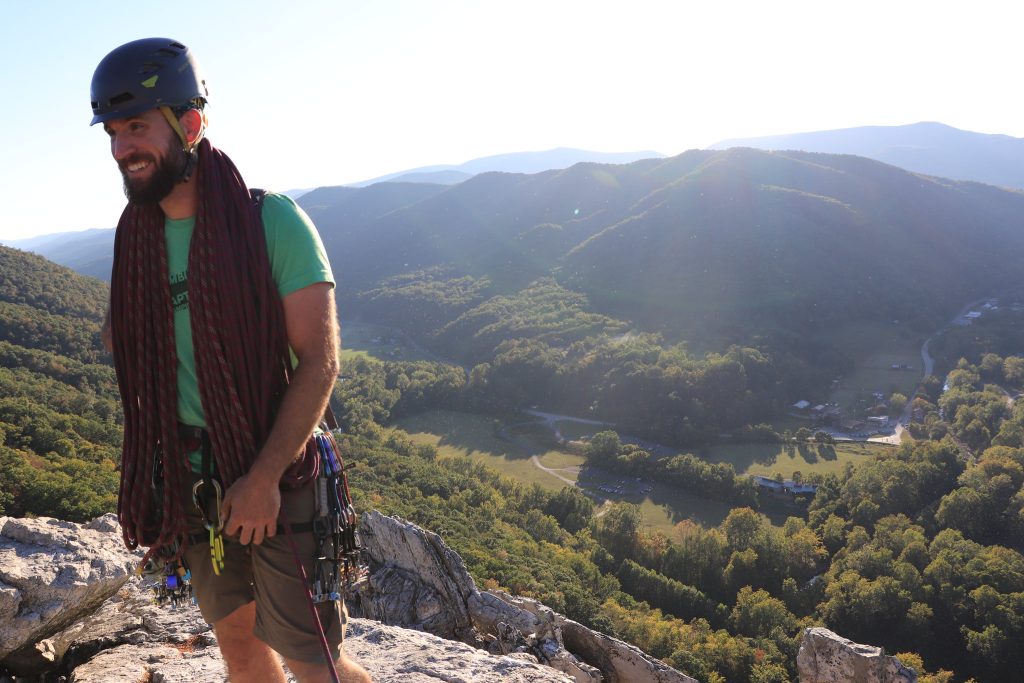Climbing helmets are gear you see surprisingly little of in climbing. Odd, you might think, as the nature of rock climbing and the heights scaled present a climber with inherent danger. Recall the 2024 Olympics, Free Solo, or the last time you visited your local climbing gym. How many climbers featured on TV or you saw in real life were wearing helmets? Likely, none.
So why do climbing helmets exist if no one seems to be wearing them? The reality is, in many modern-day climbing circumstances, a climbing helmet is unnecessary. However, it’s important to remember that the choice to wear one is always yours. You can prioritize your safety even if it is not required or others aren’t. You do you, and be confident in what makes you most comfortable.
When it comes to climbing helmets, choosing one specifically designed for the sport is essential. Quality helmets undergo rigorous testing and certification by professional organizations. So, if you’re considering a purchase, ensure it’s been tested and approved for rock climbing. Additionally, it’s crucial to fit your helmet correctly. A loose-fitting helmet can be just as dangerous as not wearing one, as it may not provide adequate protection in the event of a fall.
Situations to Wear a Climbing Helmet

- Outdoor sport climbing where there’s a high chance of falling rock and debris.
Well-trafficked outdoor crags are generally places where it is okay to forgo a climbing helmet. However, if the rock type or area you are climbing in is known for loose rock or your climb has lots of debris, opting to don a helmet (your belayer, too) is a good idea.
- Outdoor Sport Climbs Rated “X” or “R”
An ‘X’ rating means that part of the climb can impose severe danger or injury if you were to fall. This could be due to the lack of protection or the nature of the terrain. An ‘R’ rating implies that part of the climb has sparsely placed protective gear or is ‘runout.’ This means the distance between protection points is significant, increasing the risk of a longer fall and potential injury. In these situations, wearing a rock climbing helmet is wise unless you can climb the tricky sections without falling.
- Multi-Pitch or Big Wall Climbing
Think Yosemite’s Dawn Wall or Half Dome. Big walls are, as their name implies, big. They take days to ascend, requiring the climber to sleep on a port-a-ledge attached to the side of the wall. Multi-pitch is a way of defining a wall that requires more than one length of rope to ascend. Big wall climbing is multi-pitch climbing, but other multi-pitch routes are doable in a few hours. Either way, the longer you are on the rock wall, the higher you climb, the more risk for error or injury. Most climbers and belayers engaging in this discipline will wear helmets.
- Trad Climbing
Trad climbing requires the climber to place their protective equipment as they ascend. As gear placements may be far apart, there is a higher risk of injury and dangerous falls. Trad routes tend to follow natural cracks and seams in the rock, which are the best places to secure protective gear, but it can be easy to knock rocks, dirt, and other debris from the cracks. Like the other climbing disciplines mentioned, wearing a rock climbing helmet is wise.
- Mixed Climbing
Ice and mixed climbing are needed as no ice covers the entire rock face. Protective gear is identical to traditional climbing gear, with the addition of ice picks and crampons to help scale the iced sections. The danger of sketchy falls and falling ice or rock makes a helmet an essential piece of gear.
- Ice Climbing
In this situation, the climber is ascending an entirely frozen face of water and is undertaking a risky activity, as the ice could crack or chunk off at any moment: the extremes and uncontrollable factors of ice climbing warrant wearing a helmet.
Situations Where You Don’t Climbing Need a Climbing Helmet (and why)
- Indoor Climbing
All the rock climbing scenarios warranting a helmet occur outdoors where the environmental variables are uncontrollable. Indoor facilities have mitigated the risks of outdoor climbing and provide a controlled, safe environment in which to perform the sport. Route setters creating the climbs avoid setting moves that could end in risky falls or severe injury to the climber. Indoors, you’re safe to forgo a helmet.
- Outdoor bouldering
Outdoor bouldering is another relatively controlled climbing environment. The rock faces are short, and you’ll have crash pads and other climbers spotting your falls so you don’t hit your head.
- Outdoor sport climbing, where falling debris isn’t a significant concern.
It’s usually safe to climb single-pitch sport routes (lead and top-rope) without a helmet when you are unlikely to take a risky fall or when loose rock and debris will fall.
- Competition Climbing
Although some competitions, like World Cups, are held at outdoor venues, the climbing and setting are replicas of indoor climbing. The organizers control for environmental variables and risky movements. Other than select professional competitions, competition climbing occurs indoors, where it is safe not to wear a climbing helmet.
Generally, you should wear a climbing helmet when participating in extreme or risky outdoor climbing such as a big wall, multi-pitch, “X” and “R” rated routes, mixed, trad, and ice climbing. Indoor climbing, outdoor bouldering, single-pitch outdoor sport routes, and competition climbing are scenarios where helmets aren’t necessary. Since the most accessible and popular climbing styles fall into the latter group, you’ll likely notice more climbers without helmets than with. The bottom line is always to use your best judgment when climbing, and if wearing a helmet makes you feel safer, there are no rules against it. Your safety, your choice.

Recent Comments